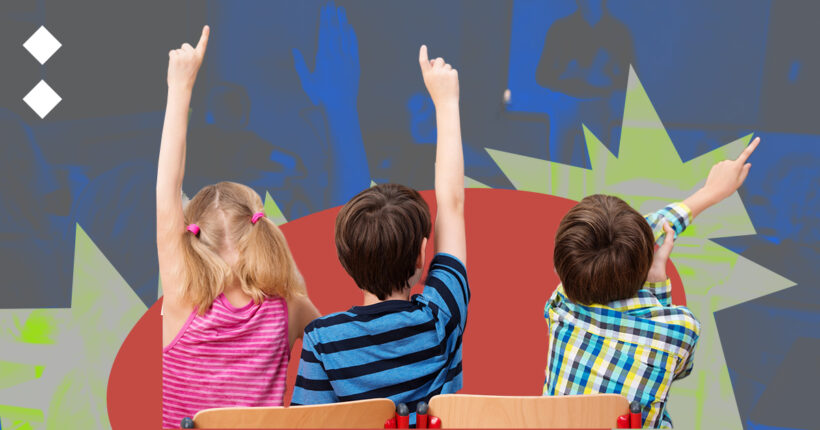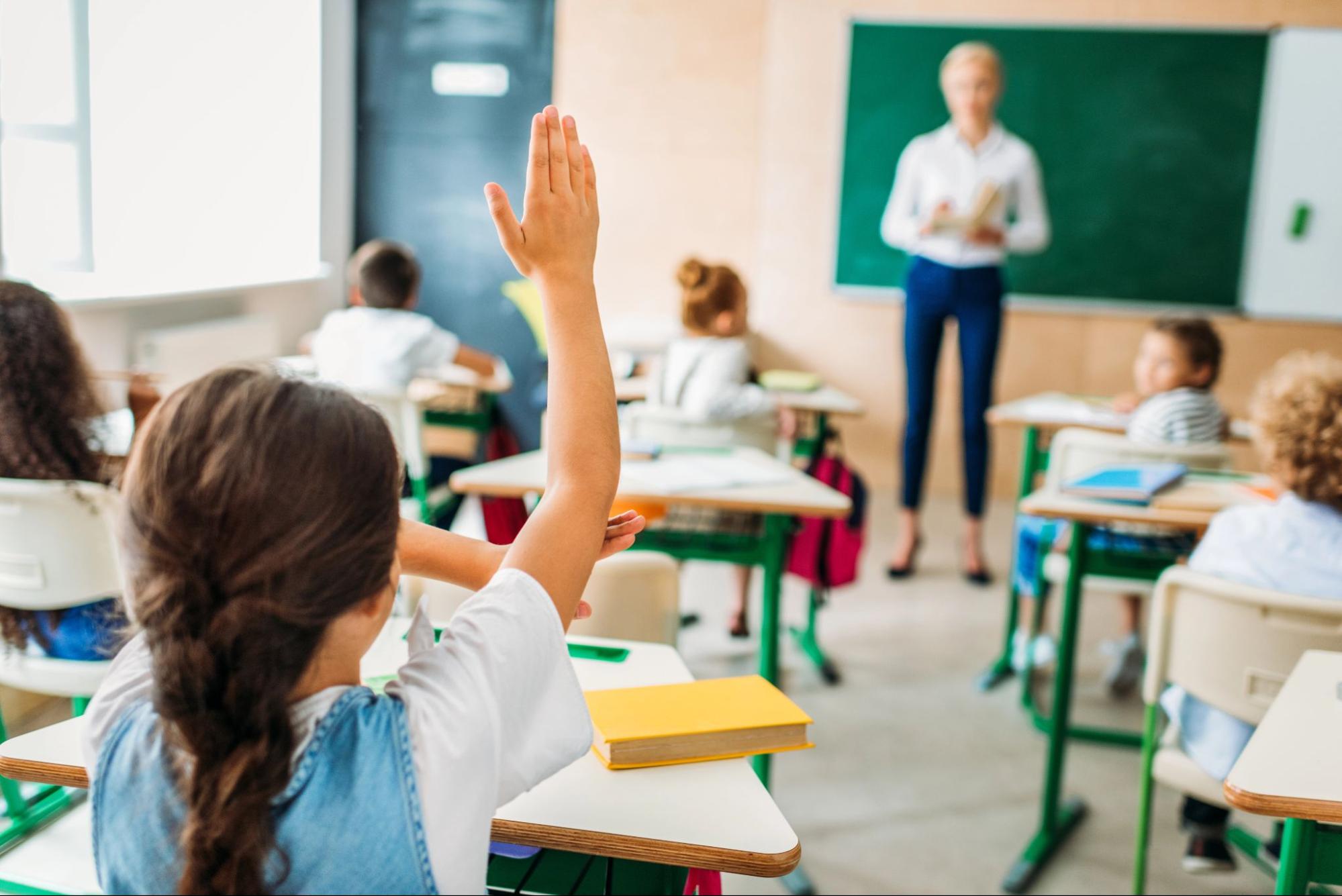
What is the problem?
For nearly four years, Ukrainian pupils have primarily relied on distance learning, first due to the COVID-19 pandemic and then due to the ongoing war. This prolonged period of remote education has had a noticeable impact on the quality of education. According to the PISA-2022 study, Ukrainian teenagers are now lagging two years behind their peers in other countries.
Minister of Digital Transformation, Mykhailo Fedorov, highlighted several key issues with online education. It hinders children from socializing and developing essential soft skills. Additionally, during blackouts, students are unable to continue their studies. There is also the challenge of ensuring that students move to shelters during air raid warnings when they are learning remotely, which is difficult to monitor.
Fedorov further noted that more than 600,000 children in Ukraine are currently studying remotely. Moreover, 390,000 children who have fled abroad are facing double workloads as they juggle studies in both foreign and Ukrainian schools.
What is the solution?
Recognizing that today's high school students will play a crucial role in shaping Ukraine's future, the Ministry of Education and Science, along with the Ministry of Digital Transformation, is taking decisive steps to adapt the education system to the current realities. They have developed a comprehensive strategy called "Offline School," which aims to return 300,000 students to safe, in-person education, and where it is unable to do so — to improve the quality of distance learning.
Oksen Lisovyi, the Minister of Education and Science of Ukraine, emphasized that distance education cannot be relied upon as a long-term solution for the country. He highlighted the diverse needs of different student groups, such as those in temporarily occupied territories (TOT) or those who have been displaced abroad. The key challenge, he stated, is to provide an individualized approach to education for each child, ensuring that every student receives a high-quality education tailored to their specific needs and the conditions they face.
How does it work?
The "Offline School" Strategy

Photo: Deposit photos
The "Offline School" policy introduced by the Ministry of Education and Science is built around five key components, each designed to address the specific needs of various student and teacher groups in Ukraine during the ongoing war. These components aim to create a more resilient education system that can adapt to the challenges posed by the war.
1. Infrastructure solutions
To ensure the safety of students in frontline regions, the government has allocated over $604,000 for the construction of shelters. As of the end of July, funding had been secured for 57 projects, but the need is far greater, with 165 additional shelters required across eight frontline and border regions.
In cases where building a shelter is not feasible, communities will purchase buses to transport children to safer schools. The government has also allocated $24,200 for these transportation needs. Additionally, at the beginning of the academic year, the government will assess the need for gadgets to support students and teachers who continue with remote learning.
2. Education at the child's location
Children who have been displaced by the war are encouraged to enroll in schools at their new place of residence. This allows them to socialize and integrate into their new communities, which is crucial for their overall well-being and educational development.
Fedorov provided an example: a child from Berdyansk now living in Chernivtsi would attend school in person, thereby receiving more focused attention from teachers and fully engaging in their studies.
For parents needing guidance on enrolling their children in a new full-time school, instructions are available online. If the local school lacks a shelter or has no available spaces, children can continue their studies remotely through their original school. Students who are part of a family-based education format will also be able to continue in that format.
3. Review of the network of distance schools
To ensure the effectiveness of distance learning, the ministry has introduced new requirements for schools operating remotely:
- Class Size: the minimum number of students per class is set at 20.
- Comprehensive Coverage: schools must offer at least one class for all years of study, covering grades 1 to 9 or grades 5 to 11 (or grades 8 to 11 for lyceums).
- Simultaneous learning: learning should be conducted simultaneously, utilizing digital tools to ensure an interactive and engaging educational experience.
4. Training in Temporarily Occupied Territories (TOT)
For children residing in TOT, the policy introduces several flexible learning formats:
- Individual study plan: implemented through pedagogical patronage, this allows students to follow a tailored study plan.
- Continued distance learning: if a child's school meets the new distance education requirements, they can continue their studies in a remote class.
- Transfer options: If a school is temporarily closed, students and their teachers can be transferred to another class to continue their education.
5. Solutions for children abroad
Children who have been displaced abroad often face the challenge of studying in two schools simultaneously: attending classes in a local school while also studying remotely in a Ukrainian school. To alleviate this double burden, the policy introduces a Ukrainian studies component:
- Ukrainian Studies Program. This is a shortened program that focuses on key Ukrainian subjects such as language and literature, history, defense of Ukraine, and geography.
- Credit Transfer. Credits for subjects studied at foreign schools will be transferred to their Ukrainian diploma, reducing the workload for students and ensuring they stay connected to their Ukrainian education.
Options for Teachers
After reviewing the network of distance schools, some teachers may face the risk of losing their jobs. To support these teachers, the strategy offers the following options:
- Personnel Reserve. Teachers placed in the personnel reserve will receive an average salary and undergo training in areas such as digital didactics, psychology, mediation, and bilingual education. According to the Ministry of Education and Science, this training is intended to prepare them for work in the liberated territories and new educational conditions.
- Transfers. Teachers can also move to work in another school where there are available positions. An algorithm to facilitate this process is currently being developed in collaboration with the State Employment Service.
- Career Counseling. Additionally, teachers will have access to individual career counseling from specialists.
Expectation and reality
The "School Offline" strategy were met with strong criticism from parents, teachers, and legal professionals involved in the school education system.
In comments on the Ministry of Education and Science's posts, many described the proposed actions as destructive, accusing the ministry of being "detached from reality." Parents questioned how face-to-face (or even mixed) learning could be feasible in frontline regions where up to 10 air raid alarms occur daily.
Concerns were also raised about the lack of choice for parents of internally displaced children (IDP). Critics argued that these children would be forced to withdraw from distance schools and enroll in local schools, often where there are simply available spots, without considering the parents' preferences. Additionally, there was anxiety over the potential closure of distance schools that fail to meet new requirements. As the legislation lacks a provision for "suspension of the activity of an educational institution," these schools face liquidation rather than temporary closure. This, in turn, would lead to job losses for teachers, with little hope of being transferred to other regions or provided with free housing.
Overall, critics claim that these innovations by the Ministry of Education and Science do not align with current legislation or the Constitution of Ukraine. They believe the policies are not designed to improve the quality of education but rather to reduce education expenses by closing schools and dismissing teachers.
What can be done now?
Serhii Dyatlenko, an education expert, suggests that the "School Offline" strategy should be divided into immediate and long-term components. He acknowledges the value of allowing children to attend schools at their place of residence, provided proper shelters are in place, given the uncertain duration of the war. He also supports the idea of providing Ukrainian education abroad in a component form to ease the burden of managing two separate educations.
However, Dyatlenko is critical of the plan to transfer children in temporarily occupied territories to individual education formats. He believes that remote learning according to the standard Ukrainian program should be maintained as long as possible for these children. He advocates for a gradual solution to educational problems, emphasizing the need for thorough planning, communication, and justification rather than implementing sweeping changes through a single order.
Regarding the personnel reserve, Dyatlenko stresses the importance of preserving human resources, noting that after the war, there will be a high demand for skilled personnel. He warns that current measures might lead to a loss of labor resources, as people might seek other job opportunities if not properly supported.
Education expert Kateryna Zvereva proposes several solutions for improving education in front-line zones:
- Special Status. Grant schools special status during martial law and for a recovery period afterward to address the unique challenges they face.
- Increased Support. Provide additional subsidies and aid to support schools in these areas.
- Flexible Standards. Implement flexible educational standards to accommodate the diverse needs of students and ensure the preservation of teaching staff.
- Parental Choice. Allow parents to choose between face-to-face and remote education for their children, rather than having decisions imposed by military administrations.
- Practical Challenges. Address practical issues such as:
- Lack of Facilities: Ensure there are adequate facilities, such as toilets, in shelters where children study.
- School Meals: Meet the complex requirements for organizing school meals.
- Classroom Management: Resolve the lack of zoning into separate classes in shelters and the difficulty of conducting different lessons simultaneously.
- Teacher Burden: Acknowledge the additional workload for teachers who must teach the same lesson in both face-to-face and remote formats, which could require additional compensation.
Zvereva emphasizes that these issues require tailored solutions, adequate resources, time, and flexibility. She advocates for the involvement of practicing educators and the public in working groups to address the specific needs of frontline areas effectively.
What's next?
As of now, the exact nature of the academic year 2024-2025 in Ukraine remains uncertain. The order related to the "School Offline" strategy is still under public discussion, and the Ministry of Education and Science continues to gather regional proposals to tailor the order to local needs.
The ministry emphasizes that, regardless of the circumstances, the safety of children remains a top priority. Full-time education will only resume in areas where the security situation permits. Additional security measures will be provided in schools with shelters, implemented by officers of the Educational Security Service, who have completed specialized training and will work in schools starting from the new school year. The National Police of Ukraine reports that the project to create a safe environment in secondary education institutions will cover up to 2,000 schools by the end of the year.
For psychological safety, projects focused on mental health, adaptation of children, and their emotional stability will be introduced. For instance, starting in September, the course "Happiness Lessons" will be introduced in Ukrainian schools.
A government hotline has also been launched to provide information and answer questions about the "School Offline" project.
Newsletter
Digest of the most interesting news: just about the main thing





